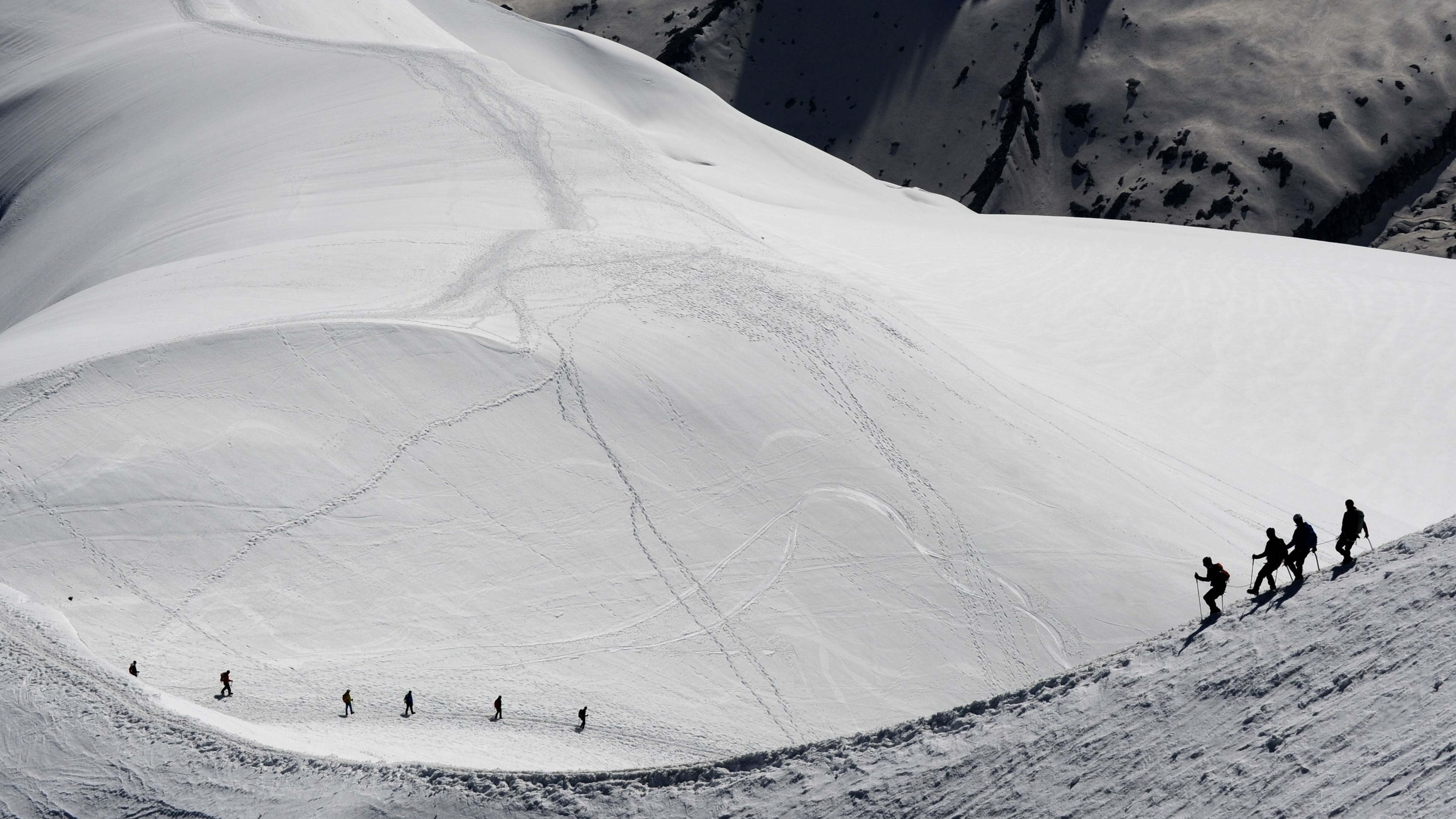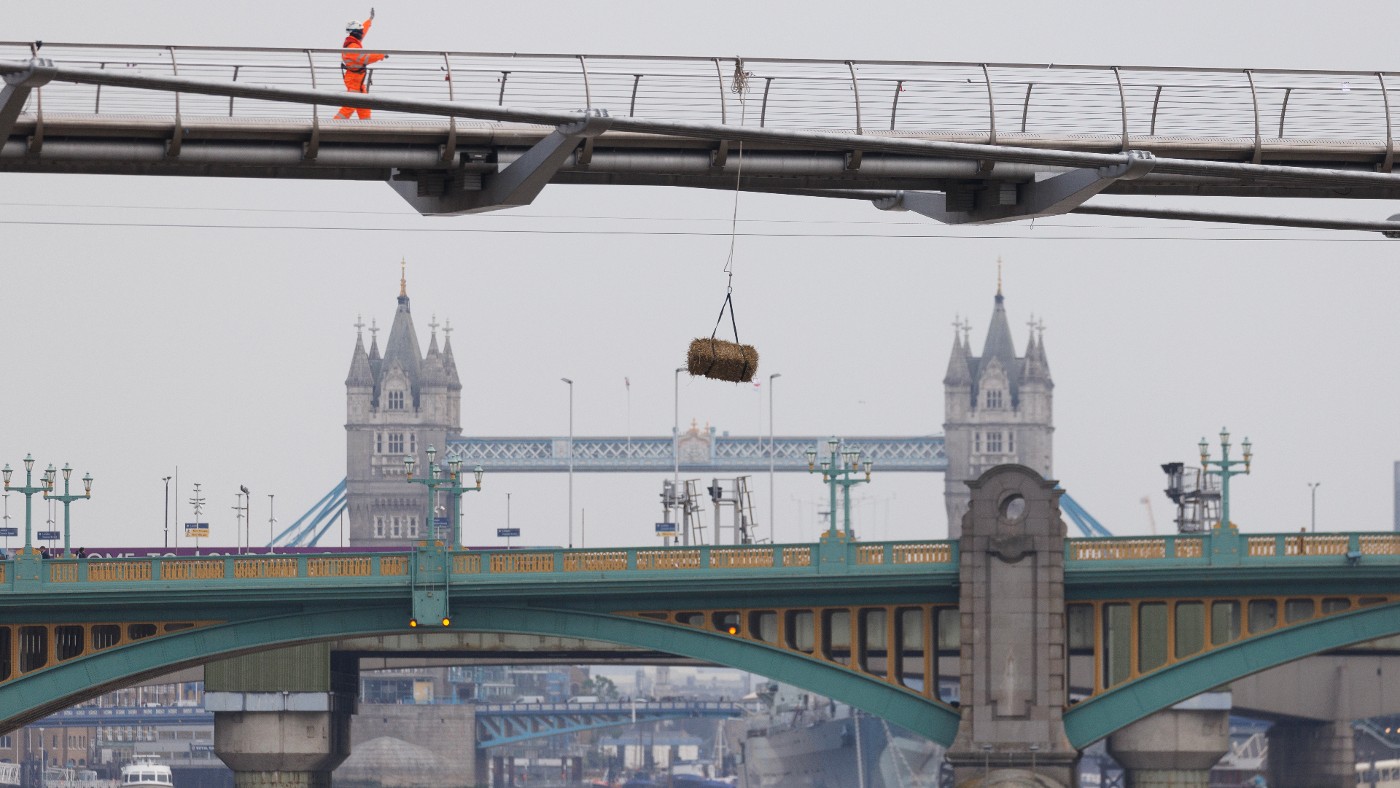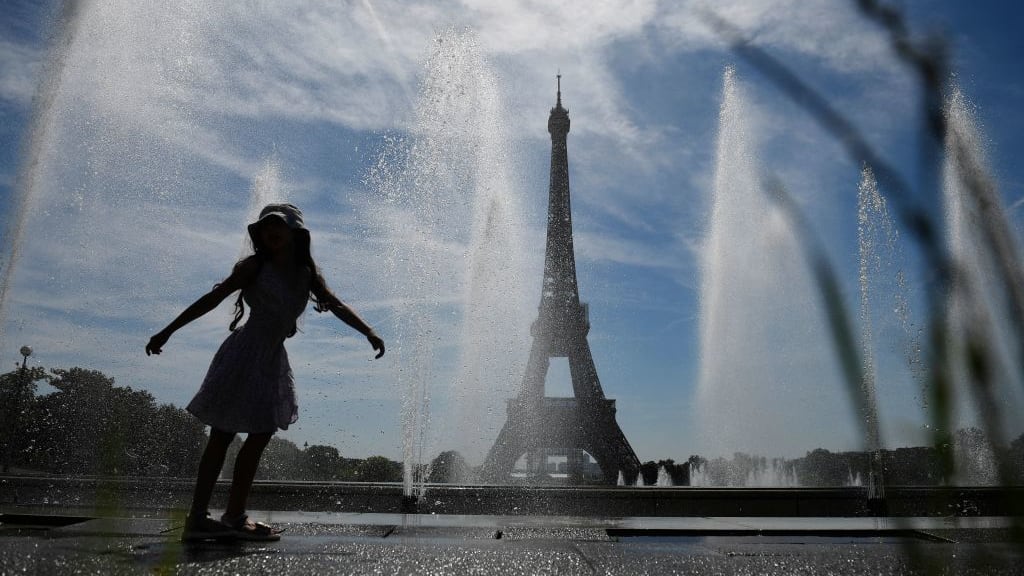Is red snow the latest warning sign of worsening climate crisis?
French scientists investigating whether global warming is behind mysterious phenomenon in Alps

A phenomenon that sees mountain snow turn from white to pinkish red each year has puzzled scientists for centuries - but now French experts are warning that the growing prevalence of so-called “blood glaciers” may be a sign of accelerated global warming.
The Alps are covered in a thick layer of white snow in winter and spring, but “as the slopes warm with the approach of summer, some mysteriously shift to turn various shades of orange, red and red”, The Telegraph reports.
Locals in the popular skiing destination have dubbed the change “sang de glacier” (“glacier blood”), while others talk about “watermelon snow”. But experts believe that the change in colour - which has been reported in mountain ranges worldwide - “may be a marker of climate change”, says the newspaper. And the amount of shade-switching snow appears to be increasing.
The Week
Escape your echo chamber. Get the facts behind the news, plus analysis from multiple perspectives.

Sign up for The Week's Free Newsletters
From our morning news briefing to a weekly Good News Newsletter, get the best of The Week delivered directly to your inbox.
From our morning news briefing to a weekly Good News Newsletter, get the best of The Week delivered directly to your inbox.
Aristotelian Alps
Aristotle “was among the first thinkers to become interested in the red snow”, after stumbling across the phenomenon on Mount Parnassus, in central Greece, in the fourth century BC, says The Times.
The philosopher “ascribed the colour to hairy worms living in freezing conditions at high altitude”, the paper continues. And he “was not all that far wrong”.
Modern-day research shows that “in fact, the pinker shade of white is caused by blooms of normally invisible algae”, says The Telegraph. These tiny plant-like organisms produce much of the world’s oxygen through photosynthesis and underpin many key food chains.
A free daily email with the biggest news stories of the day – and the best features from TheWeek.com
Although “snow algae blooms are poorly understood”, says The New York Times (NYT), experts have determined that the red colour “comes from pigments and other molecules that the snow algae use to protect themselves from ultraviolet light”.
So an uptick in snow algae blooms reported in alpine habitats all over the world in recent years “is probably not a good sign”, the paper adds.
In certain conditions, algae can multiply too quickly, causing toxic sludge, red tides - and the Alpine “watermelon snow”.
And according to findings from the Alpalga project, a new survey of algae in Alpine soils led by French scientists, “the appearance of ‘red snows’, already known in antiquity, seems to be more and more frequent at high altitudes, as well as in the Arctic and Antarctic regions”.
‘Dig deeper’
“When you ski, you slide over these micro-algae,” project leader Eric Marechal, head of a plant physiology lab at Grenoble Alpes University, told The Telegraph. “But you don’t notice them because they are green and less numerous.
“They live off carbon dioxide and light. Then come bacteria that eat them. It’s when the Sun’s rays become very strong, starting in May, that they create a shield of red molecules that play the same role as sun cream.”
In a bid to find out why blood glaciers have thrived in recent years, his team “took samples from soil found in five peaks at various altitudes to create a snow bloom map”, and studied the retrieved algae to investigate their potential bloom triggers, the paper reports.
The scientists - who outline their preliminary findings in a paper in the Frontiers in Plant Science journal - suggest that the spread of snow algae may be a marker of climate change for three reasons.
The first, said Marechal, “is that the algae are photosynthetic and live off carbon dioxide”, which is increasing as a result of burning fossil fuels.
“Second, all other blooms in nature, such as algae in lakes, are linked to human activity and emissions of nitrates and phosphates,” he continued. “We believe this is the case here and that they reach the snow in high altitude rather like acid rain.”
The third reason “is that all mountain residents have noticed that whereas these blooms were pretty rare in the past, they are now observable every year” - a trend that appears to track with increases in extreme weather.
The research team will next “try to establish whether temperature patterns correlate with blooms”, the NYT reports. The experts will also keep “track of how species distributions shift over time, which may shed light on the overall health of the ecosystem”.
“There’s so little that we know,” study co-author Adeline Stewart, who worked on the project as a doctoral student at France’s Grenoble Alpes University, told the paper. “We need to dig deeper.”
Another key goal is to get to the bottom of what impact the algae may have on melting glaciers and snow. The scientists “suspect that because the red pigments soak up the heat, they are accelerating environmental change”, The Times reports.
“It’s a paradox,” said study leader Marechal. “The more the micro-algae multiply, the more they contribute to the disappearance of their own environment.”
-
 Woman accidentally puts nan in washing machine
Woman accidentally puts nan in washing machineTall Tales And other stories from the stranger side of life
-
 Bizarre pizza toppings horrify Italians
Bizarre pizza toppings horrify ItaliansTall Tales And other stories from the stranger side of life
-
 Despairing husband creates 'Taylor Swift jar'
Despairing husband creates 'Taylor Swift jar'Tall Tales And other stories from the stranger side of life
-
 Why a bale of straw is hanging from a London bridge
Why a bale of straw is hanging from a London bridgeTall Tales And other stories from the stranger side of life
-
 Bangladesh dealing with worst dengue fever outbreak on record
Bangladesh dealing with worst dengue fever outbreak on recordSpeed Read
-
 Glacial outburst flooding in Juneau destroys homes
Glacial outburst flooding in Juneau destroys homesSpeed Read
-
 John Kerry in Beijing: how red China is turning green
John Kerry in Beijing: how red China is turning greenfeature Climate talks set to resume between Washington and Beijing this week
-
 Study: Nearly 62,000 people died in 2022 European heatwave
Study: Nearly 62,000 people died in 2022 European heatwaveSpeed Read

